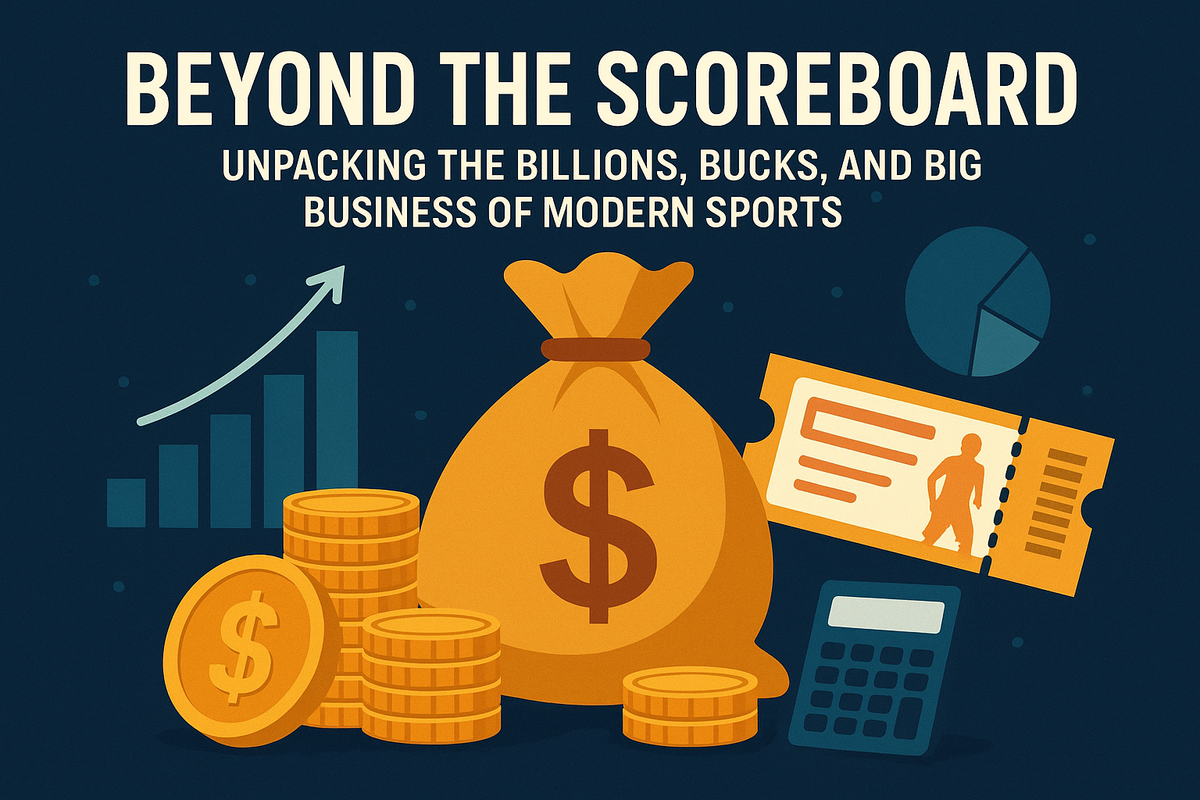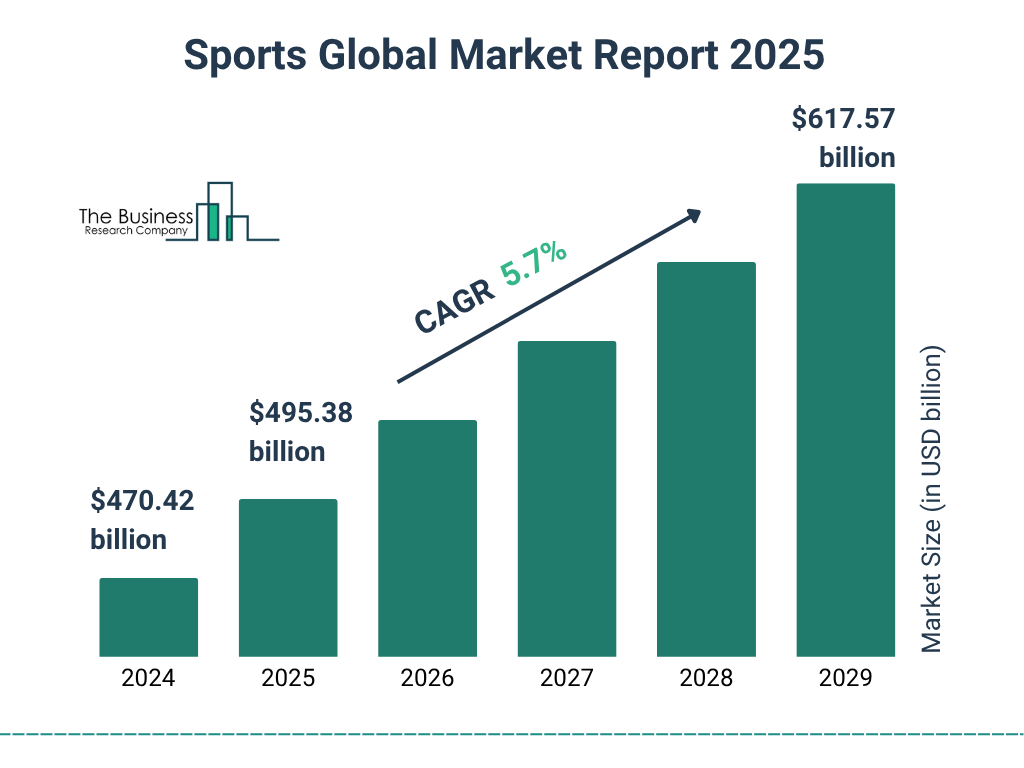Beyond the Scoreboard: The Billion-Dollar Reality of Modern Sports
Explore athlete megadeals, the explosive growth of NIL, the rise of sports betting, and how commercialization has reshaped fandom.

Written by Lavanya, Intern, Allegedly The News
NEW YORK, September 8, 2025
The roar of the crowd and the glory of victory are the emotional cornerstones of sport. But the bedrock upon which this spectacle is built is a complex, multi-billion-dollar economic engine. The days of sports as a simple pastime are long gone. Today, the industry is a sophisticated enterprise where athletes are brands, leagues are media giants, and fans are a crucial part of a massive consumer ecosystem.
The Evolution of the Game: From Pastime to Powerhouse
The commercialization of sports has been a deliberate, decades-long process. What began with simple ticket sales and local sponsorships has escalated into a global financial machine. This evolution can be traced through several key milestones:
- The Early Days of Professionalism (Late 19th Century): The rise of organized leagues, particularly in baseball, created a formal market for athletic talent. Early contracts, however, were heavily weighted in favor of owners, with the "reserve clause" effectively preventing players from negotiating with other teams.
- The Dawn of the Media Age (1950s-1960s): The advent of television brought sports to a mass audience, and with it, lucrative media rights deals. Brands like Wheaties and Coca-Cola began to use athletes in their advertising, forging the first major links between sports and consumer products.
- The Free Agency Revolution (1970s): Legal challenges, notably from MLB player Curt Flood, led to the end of the reserve clause. This seismic shift allowed athletes to become free agents, negotiating with multiple teams and driving up salaries. The balance of power began to shift from team owners to the players themselves.
- Globalization and Endorsement Empires (1980s-1990s): The emergence of satellite television and the rise of international superstars like Michael Jordan turned sports into a global product. Jordan's massive endorsement deals with Nike created a blueprint for modern athlete branding, showing that a player's value extended far beyond their on-field performance.
This timeline leads us to the present, where two of the most disruptive forces- NIL and legalized sports betting- are actively reshaping the financial and ethical landscapes of sports.
The NIL Revolution: Redefining "Amateurism" in College Sports
For over a century, the NCAA maintained a strict amateurism model, prohibiting student-athletes from profiting from their fame. This stance, however, became unsustainable in a world where college sports generated billions in revenue from media rights, ticket sales, and merchandise. The dam broke with the landmark Supreme Court decision in NCAA v. Alston in 2021. While the ruling itself addressed education-related benefits, its implications were clear: the NCAA's amateurism model was legally vulnerable.
On July 1, 2021, the NCAA implemented an interim policy allowing student-athletes to engage in Name, Image, and Likeness (NIL) activities. This created an entirely new market. As of September 2025, this market has seen a rapid influx of deals, with a recent report from the College Sports Commission revealing that its new clearinghouse, NIL Go, has processed over 6,090 approved deals worth approximately $35.42 million in a recent reporting period. While this number was initially misstated at a higher value, the sheer volume of transactions underscores the scale of this new industry.
The NIL era has had a profound impact:
- Athlete Empowerment: Athletes, from star quarterbacks to gymnasts with large social media followings, can now earn money and build personal brands. This has provided opportunities for many to support themselves and their families.
- Competitive Imbalance: The rise of donor-funded "collectives" has become a significant part of the recruiting process. These collectives pool money to offer NIL deals to recruits, raising concerns about competitive equity and whether it favors schools with wealthier alumni bases.
- Regulatory Chaos: The lack of a uniform national standard has created a confusing and complex regulatory landscape, with different states having different laws. The NCAA's new clearinghouse, while intended to bring order, has experienced its own "growing pains" and reporting errors, highlighting the difficulty of overseeing this new market.
The NIL revolution has fundamentally altered the student-athlete experience, transforming it from a system of pure amateurism into a hybrid model where athletic performance and market value are inextricably linked.
Megadeals and the Superstar Economy: The Price of Elite Talent
The astronomical salaries of today's top athletes are a direct result of the financial power of professional sports leagues. With billions flowing in from media rights, sponsorships, and merchandise, teams are willing to pay unprecedented sums for the talent that drives it all.
As of September 2025, the highest-paid athletes in the world are a mix of veterans and new stars:
- Cristiano Ronaldo and Lionel Messi still top the list, with Ronaldo's contract with Al-Nassr in the Saudi Pro League reportedly earning him over $260 million in 2024, a figure largely composed of salary. Messi's move to Inter Miami has also been financially transformative, with his total earnings for 2024 estimated at $135 million from salary and endorsements.
- In the American sports landscape, recent contracts have reset the market. Juan Soto signed a 15-year, $765 million deal with the New York Mets in 2024, the richest contract in professional sports history.
- The NFL has seen contracts for quarterbacks like Dak Prescott and Lamar Jackson exceed $240 million and $260 million, respectively, making them some of the highest-paid players in the sport.
These figures are a powerful indicator of the athlete's role in the modern sports economy. They are not just players; they are the primary assets of a franchise and the faces of global brands. Their market value is a commodity, and it's one that continues to escalate.

The Sports Betting Boom: A Double-Edged Sword
The legalization of sports betting in the U.S. has been one of the most significant developments in the sports business over the past decade. Following the Supreme Court's 2018 decision to strike down a federal ban, over 30 states and Washington, D.C. have legalized sports betting in some form. This has created a regulated, multi-billion-dollar industry that has deeply integrated with leagues, media companies, and the fan experience itself.
This boom has brought a flood of new revenue, but it also carries significant risks and ethical questions:
- Economic Impact: The industry has generated substantial tax revenue for states. Leagues and broadcasters have also secured lucrative partnerships with betting companies, leading to a constant stream of betting-related content and advertising.
- Ethical Concerns: The rapid proliferation of betting has raised alarms about the rise of problem gambling. The National Council on Problem Gambling reported a 30% increase in gambling problems related to sports betting between 2018 and 2023. Critics are concerned that the aggressive marketing of sports betting normalizes a potentially harmful activity, especially among younger audiences.
- Game Integrity: The high financial stakes create new temptations for players and officials, leading to a renewed focus on preventing match-fixing and other forms of corruption. Leagues have invested in integrity units and have strict rules in place to protect the authenticity of the games.
The sports betting boom represents a fascinating tension between financial opportunity and social responsibility, a debate that is far from settled.
The Final Play: Looking Ahead
The business of sports is a relentless engine of innovation and profit. It adapts, expands, and continually redefines itself. The trends we see today, from soaring valuations of franchises to the rise of fan-centric technologies, suggest an even more integrated and financially robust future.
The core challenge for the industry is to manage this growth responsibly. The future of sports business will depend on finding the right balance between profit and purpose, ensuring that the integrity of the game, the welfare of its athletes, and the accessibility for its fans remain at the heart of this colossal enterprise.
The business of sports is an intricate, high-stakes ecosystem that transcends mere competition. It is a testament to the enduring human fascination with athletic achievement, amplified and monetized by modern media, technology, and global capitalism. The debates over athlete salaries, NIL, and sports betting aren't just about money; they are a reflection of how we value talent, entertainment, and fair play in the 21st century.
Your Turn to Discuss
Given the escalating costs for fans and the dominance of a few media companies, how can the sports industry ensure that it remains accessible and affordable for a broad audience? With the rise of sports betting and its influence on fan engagement, is there a risk that the intrinsic joy of watching sports will be replaced by a purely financial interest?
Sources
The Wall Street Journal, Front Office Sports, The Associated Press, SportsPro, and Legal Sports Report.




